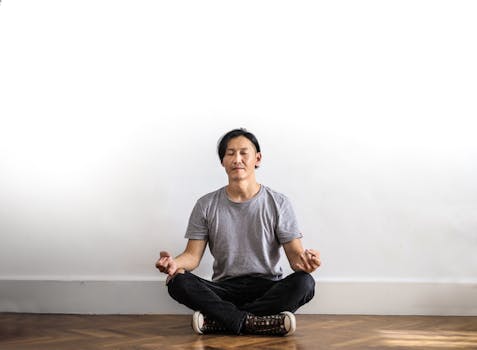
Unlocking Inner Peace: Mindfulness Meditation Techniques for Everyday Life
Takeaways: This article explores various mindfulness meditation techniques that can help you reduce stress, improve focus, and enhance your overall mental wellbeing. By incorporating these practices into your daily routine, you can cultivate a greater sense of presence and peace.
Mindfulness meditation is a powerful practice that encourages individuals to focus on the present moment, promoting a sense of calm and clarity. In a world filled with distractions and stressors, learning mindfulness techniques can be a transformative experience. This article will delve into different mindfulness meditation techniques that you can easily integrate into your daily life.
Understanding Mindfulness Meditation

Many people turn to mindfulness meditation as a way to alleviate stress, improve mental clarity, and enhance emotional resilience. Research shows that consistent practice can lead to changes in brain structure, improving areas related to emotional regulation and stress response.
Benefits of Mindfulness Meditation
- Stress Reduction: Regular practice can significantly lower stress levels, helping you navigate daily challenges with a clearer mind.
- Improved Focus: Mindfulness meditation can enhance your ability to concentrate and maintain attention on tasks.
- Emotional Wellbeing: It fosters a greater awareness of emotions, allowing for better emotional regulation.
- Enhanced Relationships: Being present can improve communication and empathy in your interactions with others.
Mindfulness Meditation Techniques to Try
1. Breath Awareness Meditation
One of the simplest and most effective mindfulness techniques is breath awareness meditation. This practice involves focusing your attention on your breath, observing each inhalation and exhalation without trying to change it. Here’s how to do it:
- Find a quiet space and sit comfortably.
- Close your eyes or lower your gaze to minimize distractions.
- Take a few deep breaths to settle into the moment.
- Begin to notice your natural breath. Feel the air entering and leaving your nostrils or the rise and fall of your belly.
- If your mind wanders, gently bring your focus back to your breath.
- Practice this for 5-10 minutes daily, gradually increasing the duration as you become more comfortable.
2. Body Scan Meditation
Body scan meditation is a technique that helps you develop a deeper awareness of your physical sensations and is particularly effective for releasing tension. To practice body scan meditation, follow these steps:
- Lie down comfortably on your back with your arms at your sides.
- Close your eyes and take a few deep breaths.
- Begin by bringing your attention to your toes. Notice any sensations, tension, or discomfort.
- Slowly move your attention up your body, scanning each area (feet, legs, abdomen, chest, arms, neck, and head) for sensations.
- If you notice tension, visualize breathing into that area and consciously relaxing it.
- Continue this practice for 10-20 minutes.
3. Mindful Walking
Mindful walking combines physical movement with mindfulness, making it an excellent technique for those who find it challenging to sit still. Here’s how to practice mindful walking:
- Find a quiet space where you can walk back and forth, or take a stroll in nature.
- Begin walking slowly, paying attention to each step. Feel the ground beneath your feet.
- Notice the movement of your body as you walk—the shifting of weight, the swing of your arms.
- Engage your senses by observing the sights, sounds, and smells around you.
- If your mind wanders, gently bring your focus back to the act of walking.
4. Guided Meditation
For those new to mindfulness, guided meditation can be an excellent way to start. You can find numerous apps and online resources that offer guided sessions focusing on relaxation, stress reduction, and mindfulness. Here’s how to incorporate guided meditation into your routine:
- Choose a quiet space and find a comfortable position.
- Select a guided meditation that resonates with you, ideally one that lasts 10-30 minutes.
- Close your eyes and listen attentively to the guide, following their instructions.
- Allow yourself to be fully immersed in the meditation, letting go of distractions.
By practicing these mindfulness meditation techniques regularly, you can cultivate a greater sense of peace and presence in your life. Start small and gradually incorporate these techniques into your daily routine to experience their benefits fully.





